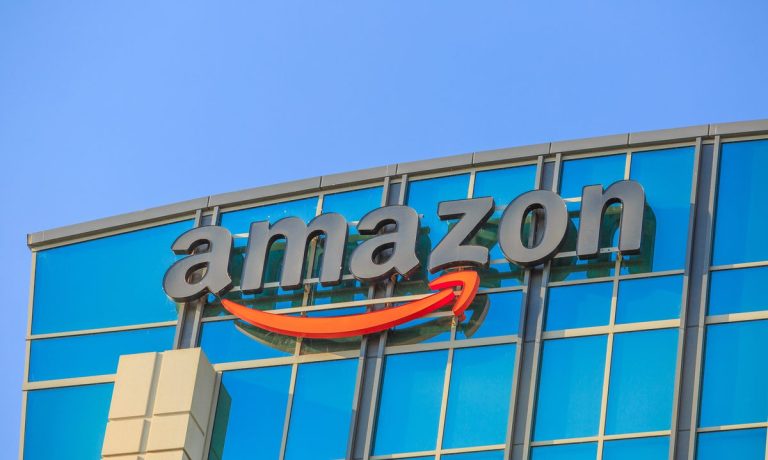
“France has lost a battle, but France has not lost the war,” Charles de Gaulle famously said in June of 1940, while encouraging his fellow countryman to continue their fight against the Nazi invasion.
While we all know how that chapter of history would eventually play out, the differentiation that it outlines, between short term setbacks and long term victory, is very much relevant to the long-running contest between Amazon and Walmart.
On the one hand, PYMNTS latest sales research has confirmed that Amazon has finally pulled ahead of Walmart in terms of its 9.4% share of U.S. retail sales compared to 8.6% stake of spending held by its closest competitor.
That leadership change not only marked the culmination of a decade-long pursuit, but it also reflects the cumulative effect of the increasingly digital economy in which we live, work and shop today. In that world, Amazon commands an exponential lead in online purchasing, where its share of eCommerce shopping currently sits at 56% as measured by the value of everything sold by itself and third parties through its namesake marketplace.
Today, the clout and long-term expectations of Amazon’s retail juggernaut are best marked by its $1.5 trillion valuation, which is approximately four times that of Walmart’s market cap of $440 billion even though their reported revenues and profits are much closer to a dead heat.
Enter the Short-Term
While the rise of Amazon, alongside Wamart’s sideways, treading water market share trait, is a well established long-term trend, their near-term tussle tells a completely different story.
Whether you use a one-week, two-week, one-month, three-month, year to date, six-month or even one-year time frame to compare the two stocks, the investor preference clearly skews in favor of Walmart and the 10,500 physical retail locations it operates in 24 different countries.
In fact, since the outbreak of war in Ukraine two months ago through yesterday (April 21), shares of Walmart have risen about 19%, compared to a 2% slump for Amazon and a 4% gain for the S&P 500.
As much as this is a comparison of two stocks, it is also a bet on consumer intentions as a whole, as investors clearly believe that the present economic environment is better suited to Walmart shoppers, bargains and finding the lowest price on household staples than rapidly delivered non-discretionary purchases made online.
Although Amazon’s first quarter results for the three months ended March 31 will only reflect about one month of wartime consumption trends when they are released next Thursday (April 28) afternoon, they will confirm whether near-term investor intuition got it right or wrong.
The same will be true three weeks later when Walmart posts its Q1 results on May 17.
Calling All Sellers
While that battle of consumer intentions and reactions plays out, the future-minded Amazon was busy this week tweaking its proposition to attract more sellers to its platform. This, via a move that was aimed at strengthening its grip on digital sales and sellers as much as acknowledging its growing competition with comparatively “small” rivals like Shopify, which is worth “only” about $60 billion — or roughly 4% of the Seattle-based segment leader.
In announcing the expansion of “Buy With Prime,” which will allow merchants to offer the same “fast, free delivery, hassle-free returns, and a seamless checkout experience” on their own websites that Amazon Prime subscribers get on the mother ship, the digital giant made a major play to attract sellers, who might otherwise seek those seamless services from Shopify.
The move comes at a time when Walmart is also aggressively looking to attract new sellers to bring new products to its marketplace, which in turn should drive more consumer traffic and purchases, it is also a reflection of the growing logistical challenges that exist throughout the retail industry today.
Specifically, in the omnichannel era of shopping it is not enough to simply offer a product at a competitive price on your site. It also requires the holistic skills involved in keeping the right items in stock at sufficient levels of inventory, as well as the ability to smoothly process payments and returns, and lastly — and perhaps most importantly — to deliver that merchandise into consumers’ hands as soon as possible.
That is a fight that is set to outlast the current conflict in Ukraine and the ongoing bout of inflation, and will see the top two retailers — and dozens of industry rivals — battling to become the preferred place to purchase no matter what.